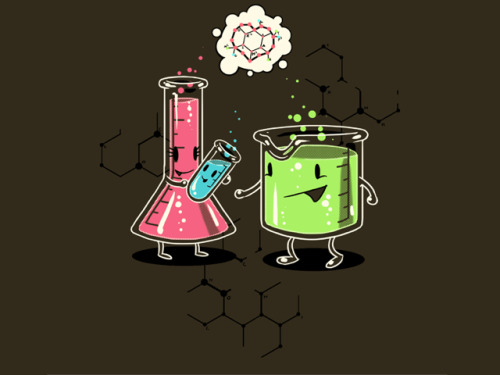(Please please read the caption, my friend)
HA HA HA. Coincidentally, hydrochloric acid is one of the most important chemical components in our lab today. So, my sincere advice to you: please DO what Professor Glickman is doing (IF AND ONLY IF you wish to get smack in the head by Professor Bingham, that is in the case where he can still feel his back and get send to the principal's office and later wait to die in the juvenile detention centre.)
You get the point, folks. Goggles on, and let's
The procedure for this experiment is utterly simple. So I suggest you to prepare a chair beforehand because there won't be any left once everyone begins to notice how easy it gets. JOKES
Without further ado, let's get down to the business. The Day 1 portion of this experiment involves a 25mL Na2CO3 solution and a 25mL CaCl2 solution both contained in a separate graduated cylinder to be poured together into a 250mL beaker. Now observe.
You will find that the mixture becomes a milky white solution, appearing to be a homogeneous colloid. Sort of like milk but with a thicker consistency.
 Then, with the previously set-up filtering apparatus (ring stand + funnel+filter paper +beaker/Erlenmeyer flask), pour the mixture slowly into the funnel through the filtering paper. Be sure the beaker is directly underneath the funnel's opening, or else, you will wet the poor table. Make sure you drain it slowly and slowly, or else the mixture will clog the hole. If you wish, you can even rest and wait until the partial mixture is completely 'down the drain.' (And that's what I said the chair is for!) Then do so repeatedly until most of the liquid component is inside the beaker. Now remove the filter, put it on a piece of paper towel then let it sit and dry until next day.
Then, with the previously set-up filtering apparatus (ring stand + funnel+filter paper +beaker/Erlenmeyer flask), pour the mixture slowly into the funnel through the filtering paper. Be sure the beaker is directly underneath the funnel's opening, or else, you will wet the poor table. Make sure you drain it slowly and slowly, or else the mixture will clog the hole. If you wish, you can even rest and wait until the partial mixture is completely 'down the drain.' (And that's what I said the chair is for!) Then do so repeatedly until most of the liquid component is inside the beaker. Now remove the filter, put it on a piece of paper towel then let it sit and dry until next day."Will I die if I touch them [the chemical substances] by accident?" - Speaker A
"
On Day 2, just weigh the mass of the dry filter paper, then you are ready to ummmm "talk N troll"!!!
Let's take a look at the chemical equation for this lab:
1Na2CO3 + 1CaCl2 ---> 2NaCl + 1CaCO3
The two products produced are NaCl and CaCO3, or you can simply call them salt and chalk to de-frighten yourself.
Now that's everything for today. Hopefully you have calm yourself down from the sudden horror that you've created. Because...
(Can't seem to see what we prepared you for, WELL, you need to call your optometrist immediately to get your eyes properly examined...)












